This page contains affiliate links. Please read our disclosure for more info.
It had been on our bucket list for a long time. We gazed at yachts in marinas and planned which one we’d buy to sail the world. It didn’t matter that we had no sailing experience, had never even spent a night on a yacht, and that I got seasick. We knew deep down that it was something we’d do one day. Last month we finally took the first step towards our dream and signed up for a sailing course with Langkawi Sailing School in Malaysia.
We decided to take the Competent Crew course run by the well respected British Royal Yachting Association (RYA). We didn’t need any previous experience and by the end we would hopefully be useful yacht crew members (we’d have to take the next course to learn to skipper our own boat). The live aboard course was six nights with five full days’ sailing. Usually these courses are a day less but Langkawi Sailing School add an extra day for more time to enjoy the 99 tropical islands of Langkawi in the Andaman Sea.
Over the next few weeks I’ll be writing a three post series that covers the day to day of learning to sail a yacht, as well as a detailed review of the school covering all of the practical details.
Arrival Day: Sunday
Our fears were numerous and varied. Would we be able to remember all that sailing vocabulary? What about tying knots? Would we get on with the others? What if we don’t get our own cabin? How would we deal with the lack of privacy?
It didn’t help that I’d felt seasick while having dinner on a friend’s yacht a few days before. And the boat was stationary. In calm waters. Ugh. What if I’m sick the whole week?
We were due to meet our instructor Barry at Telaga Harbour at 7pm on Sunday night. It turned out that the other student on our course, a backpacker from Prague called Marie, was staying at our guesthouse at Cenang Beach so we shared a taxi. As we sat outside the marina office we watched the dusky leaf monkeys, pitch black except for white rings around their eyes, and tried to calm our nerves.
When we met British couple Barry and Lynette who run the sailing school their warm, down to earth manner put us at ease straight away, and we felt better once we were aboard our home for the week: Kay Sira, a Slipper 42 ft Ketch.
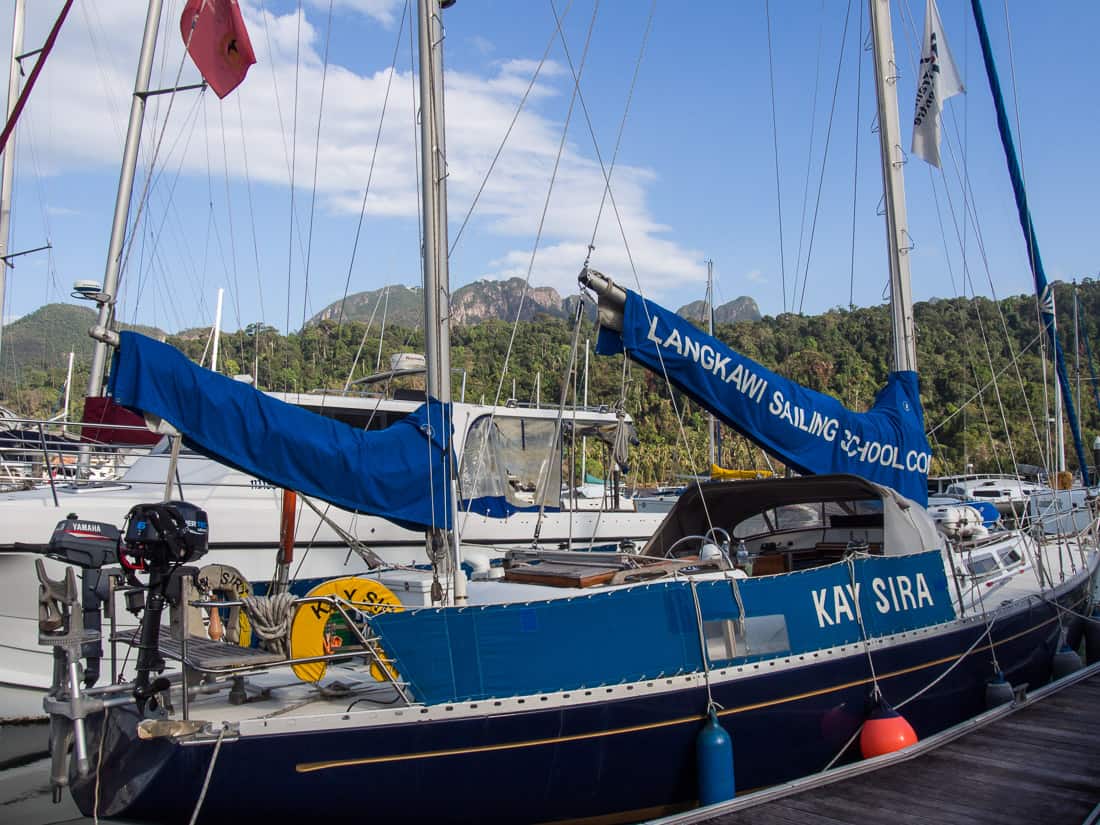
There are usually five students on a course, but there were only three of us so we had more space than usual. We had our own cabin in the forepeak—two single bunks in a V shape squeezed into the bow. It looked tiny but there was plenty of storage and it felt quite cosy.
After we were shown around we helped load water and food onto the boat so that we knew where everything was, and got to see the ingenious use of space—a chest fridge under the seats and plenty of other storage, everything stowed away securely.
We all headed to an Italian restaurant in the marina for dinner. We met up with the other two instructors in the school, Keith and Chris (who have their own boats), and they regaled us with good humoured tales of mishaps at sea.
The first night on the boat was a little challenging. It was steaming hot, despite the efforts of the small fan that sounded like a rocket launching, and we felt claustrophobic in the small space. Eventually we managed to sleep.
Day 1: Monday
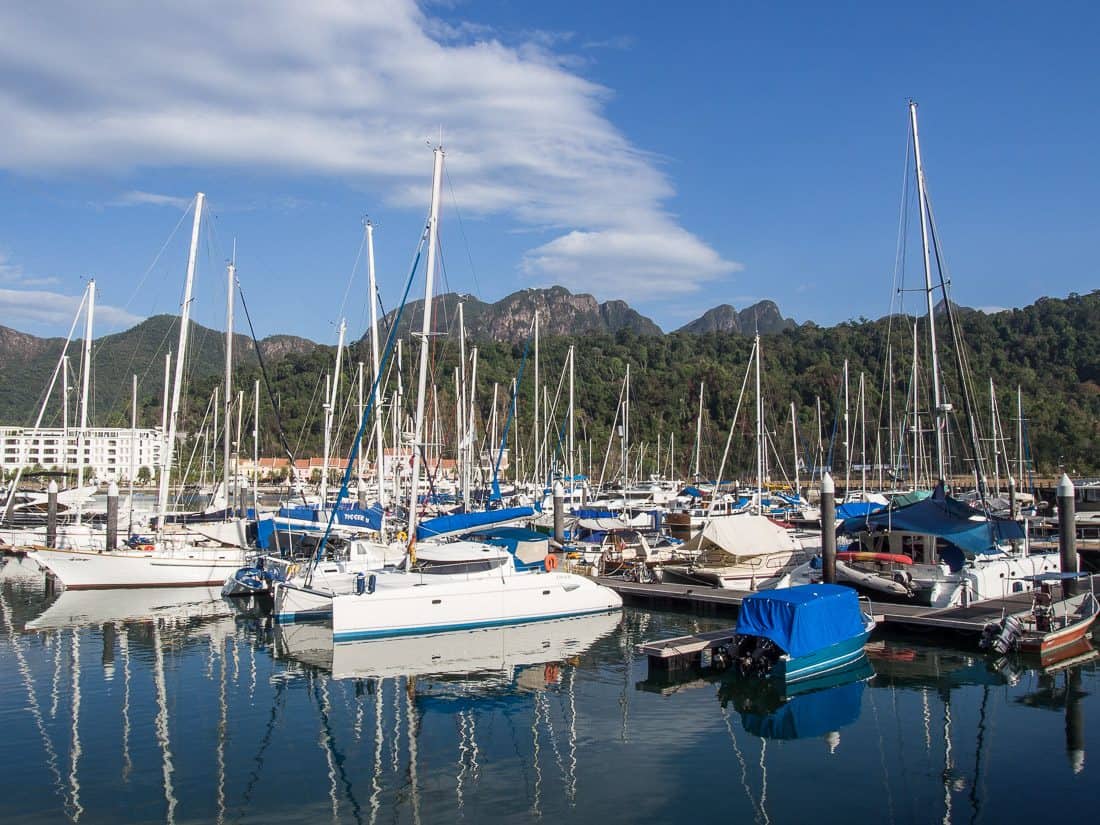
The marina was a lovely place to wake up; the jagged, jungle-covered peaks rising above the sheltered bay. We used the showers in the marina before having breakfast on the boat.
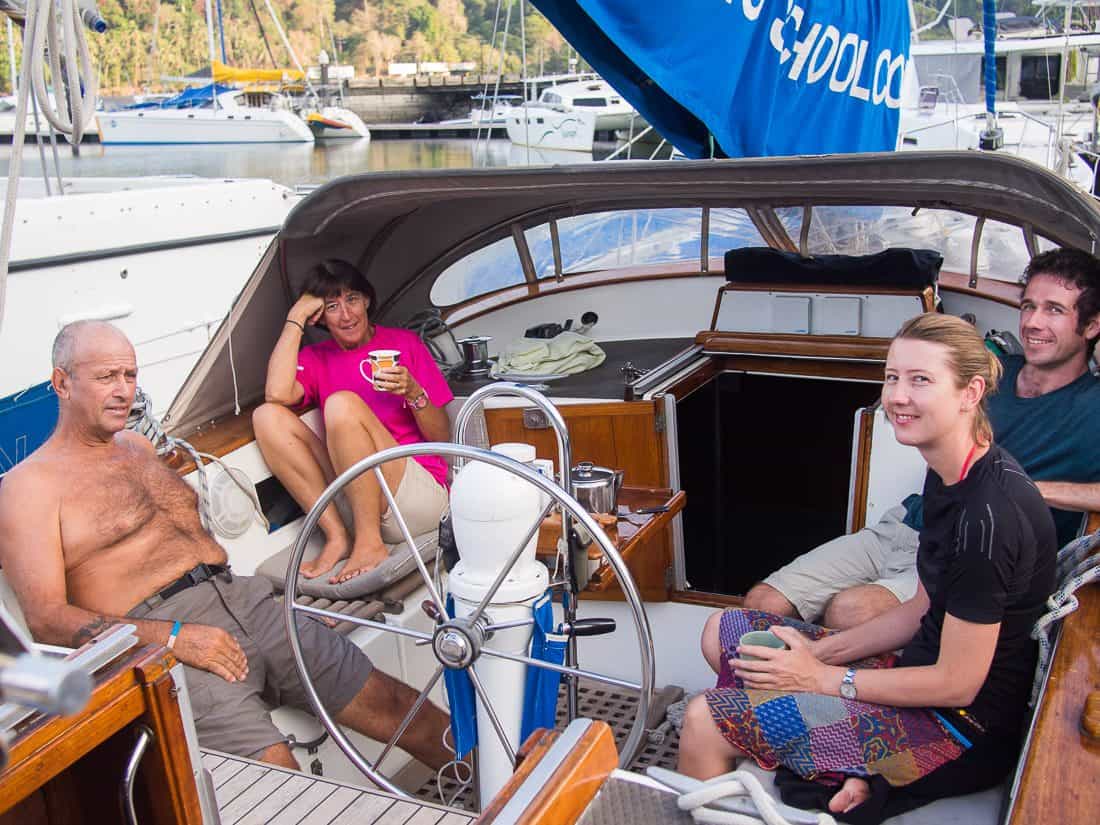
At around 9am the course started with a very detailed safety briefing. We went through all the safety equipment to know where it is and how and when to use it: life jackets (which as it’s calm, warm conditions we only wear at night or in high winds), life rafts, and flares.
We went through the preparing for sea check including learning how to check the engine. Surprisingly, given my total lack of mechanical knowledge, I managed to remember how to do it when it was my turn later in the week using Barry’s mnemonic WOBBLE.
By midday we were untying the lines to the marina, turning on the engine, and sailing off (or rather motoring). We were excited to be underway. We started slowly with Barry giving us different tasks to do, learning by doing.
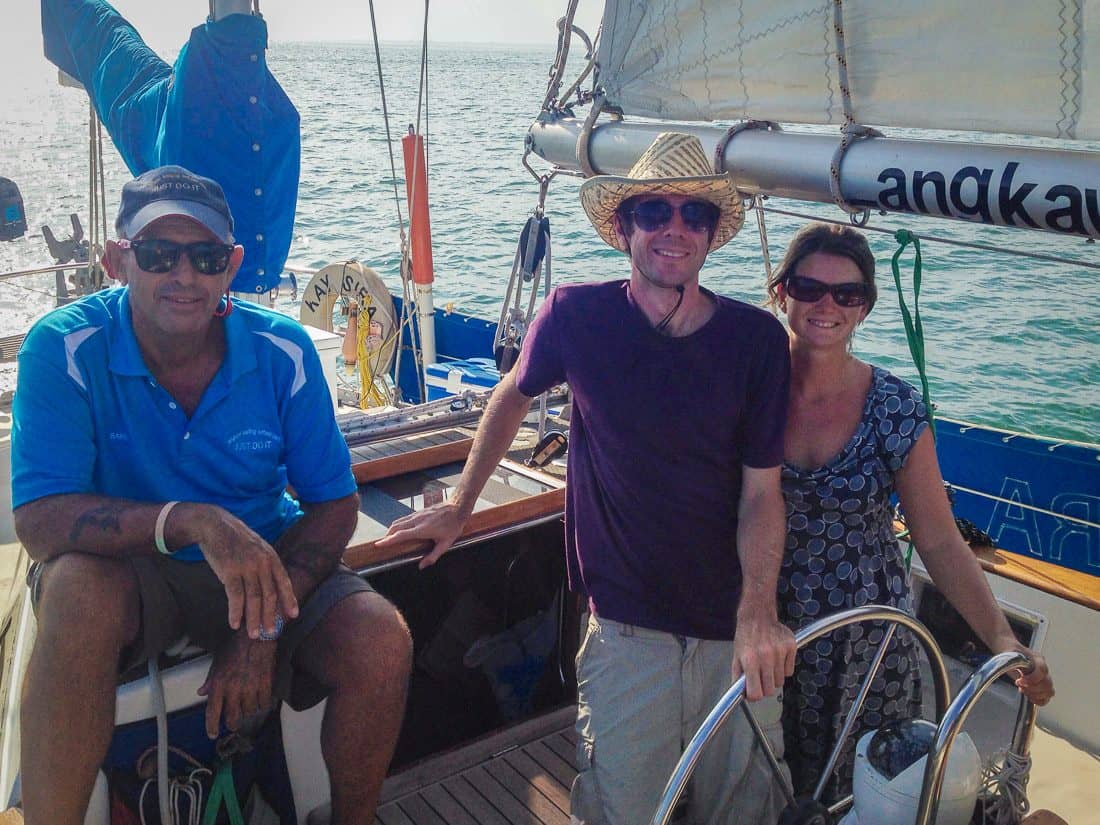
We didn’t go far, just past the nearby islets, anchoring around the corner by Belikit beach for a lunch of sandwiches and fruit that Lynette had prepared.
After lunch we pulled up the anchor (easy with the electric anchor windlass) and set off again. This time we were sailing, and we giggled with glee as we hoisted the mainsail for the first time; it felt like a momentous moment. It was awesome (although quite hard work) to raise the 55 ft high sails and exhilarating to sail under their power.
Our first task was to practice gybing where you change direction by turning the stern through the wind. We took turns at different jobs—steering, the mainsail, and either of the two headsail sheets (the ropes which control the sail). Barry made us gybe over and over again until we knew what we were doing at all the tasks. It was a wake up call that this wasn’t a holiday but hard work. Bringing in the sails is a very physical job, an upper body workout that left our arms aching and our hands sore and blistered (we borrowed gloves for later days which made things easier).
We pulled into the marina on Rebak island at around 5pm. We were exhausted, hot and sunburnt, and a little overwhelmed by everything to remember—the vocabulary, which lines are used for what, which knots to use in different situations—but overall it was much less scary and intimidating than I’d feared. I was also pleased that I’d managed to avoid sea sickness.
Rebak is privately run by a large hotel and we had use of the hotel’s large swimming pool—just what we needed to cool off. We had dinner at the Marina restaurant with the crew from the school’s other boat Aeolus who were doing the more advanced Day Skipper and Yachtmaster courses.
We used to walk through marinas looking at the yachts in awe, but as we walked back to Kay Sira that night we realised that now we’re part of this world, we belong.
Day 2: Tuesday
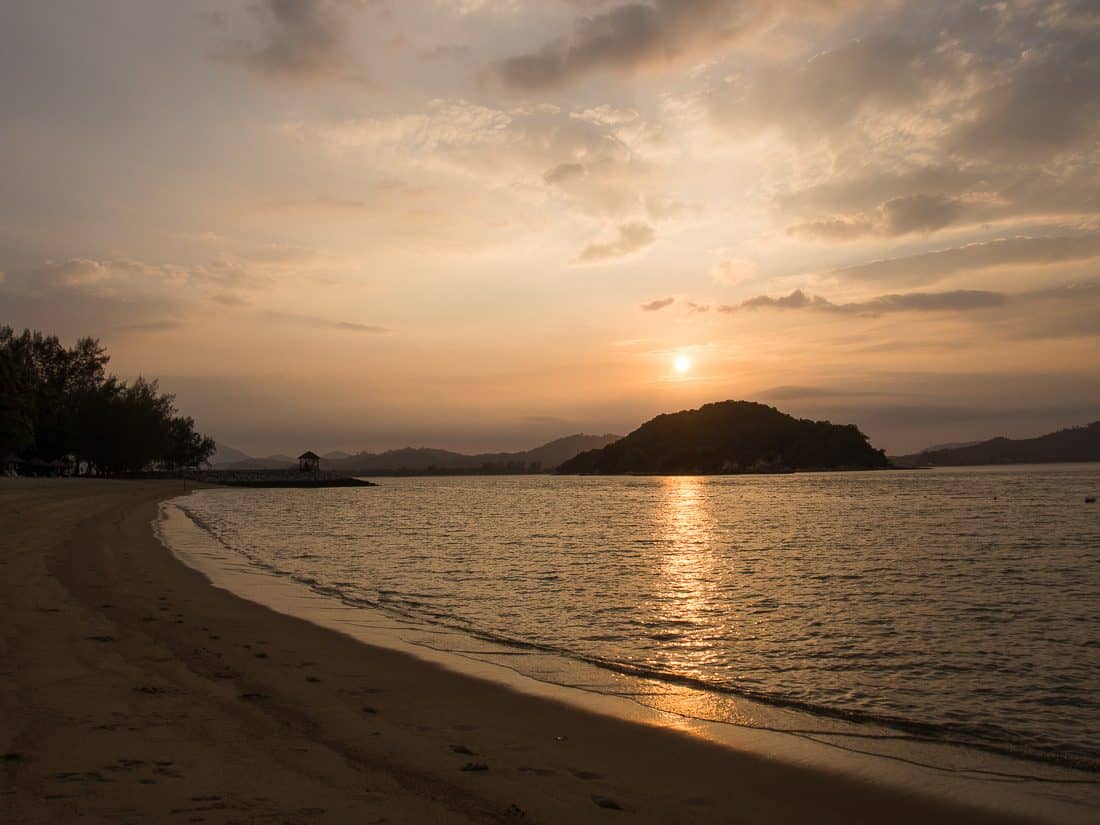
Simon and I woke just after 7am and walked along the nature trails to see the giant hornbills with their large orange beaks, and sunrise at the resort’s beach. The biggest challenge on the boat for me was being around other people all the time. As an introvert I need alone time to recharge my energy. It was difficult at times but it was possible to carve out moments like these early in the morning for some quiet time.
Back on the boat we helped ourselves to breakfast and did a review of the previous day, going over sailing vocabulary (the foreign language was gradually beginning to become comprehensible) and then had the dreaded knots session—we needed to know six knots and their variations for the course. I had no experience of knot tying and although it started simply enough, by the end of the session I was overwhelmed and confused. It was clear I needed to practice.
We prepared the boat for another day’s sailing and went over our passage plan, plotting our route on the charts.
We took off, each taking turns steering which wasn’t too difficult. It was a beautiful morning sailing past gorgeous karst islands and turquoise sea.
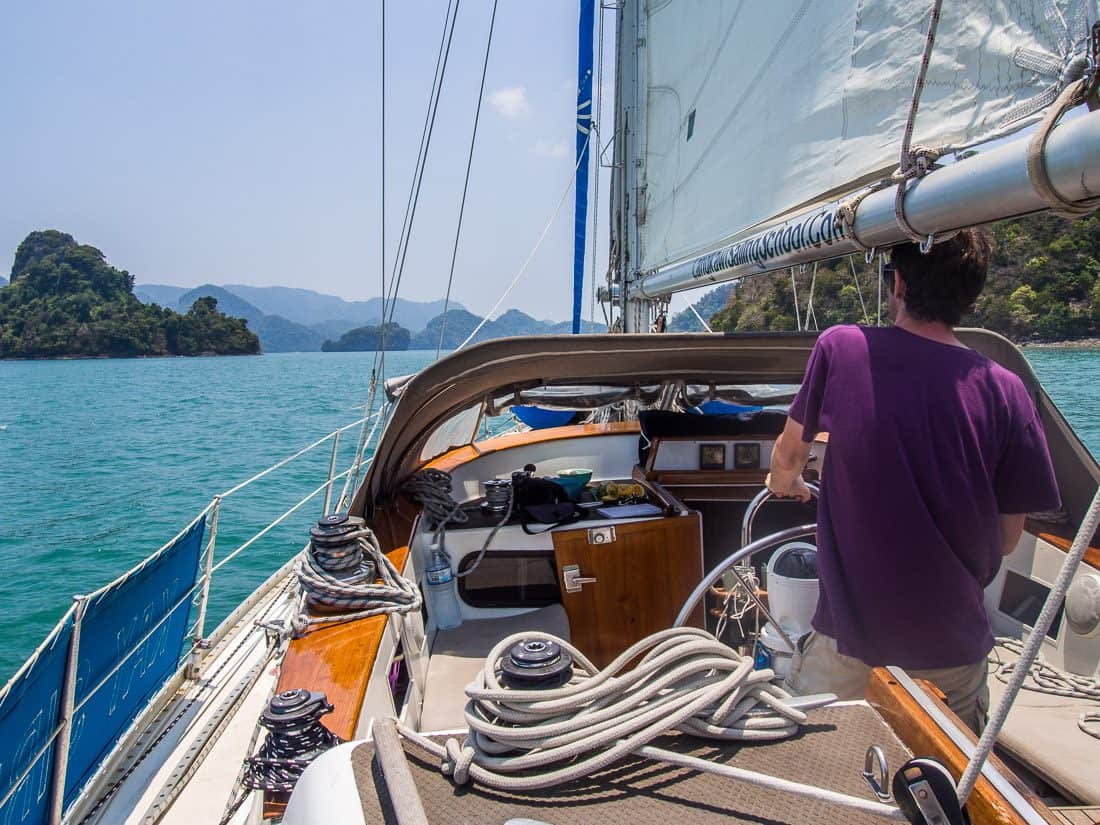
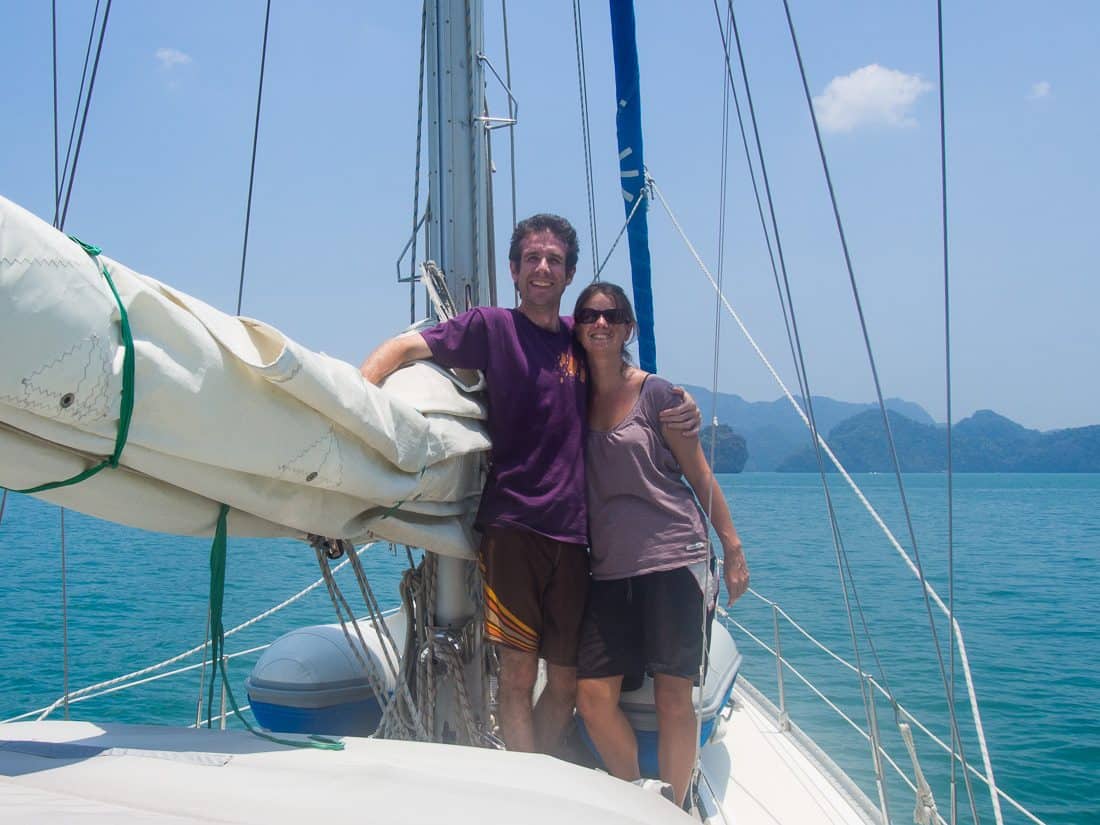
For lunch we anchored in a channel surrounded by jungle covered islands, no other boats around. We jumped in for a swim—so refreshing after a hot morning in the sun. After lunch of salad wraps, Barry went for his usual nap while we read, practiced knots, chatted or dozed.
The scenery was even more spectacular in the afternoon as we practiced the points of sail—adjusting the sails when changing course depending on the wind direction. What a close reach or beam reach is makes so much more sense when you feel the wind on the sails than when reading about it in a book.
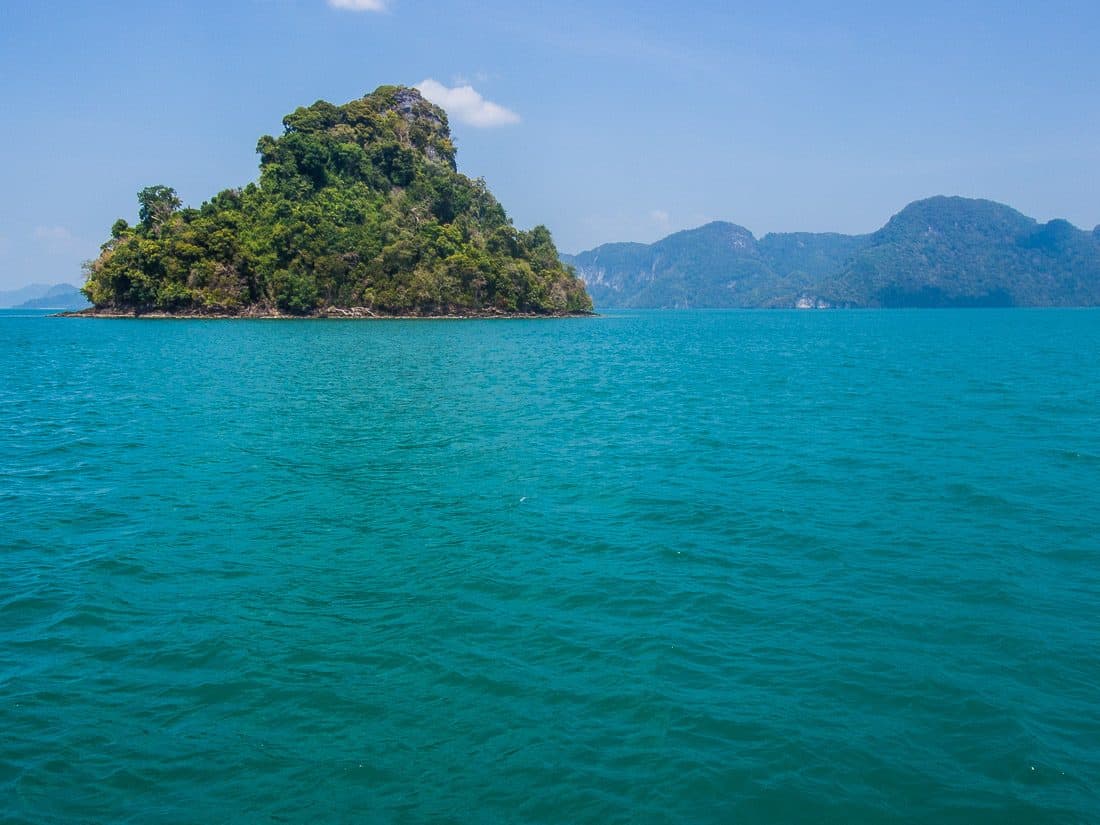
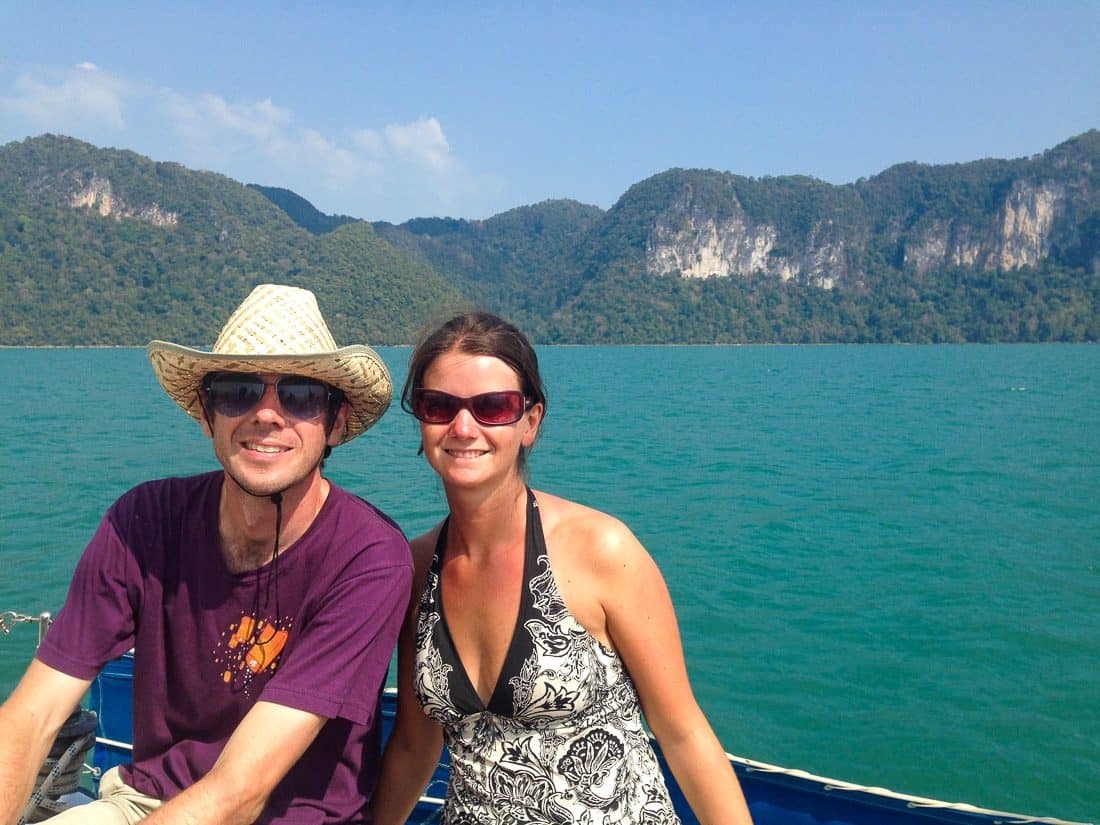
At sunset we sailed into Langkawi’s main port Kuah and moored to a buoy amongst the ferries and schooners. It began to rain—the only rain we had all week—so we ate the tasty vegetarian lasagna Lynette had made in the hot saloon rather than the cockpit where we usually ate. Luckily the rain didn’t last long because after dinner we were “off on another adventure” as Barry says, to do the four hours night sailing that’s a requirement of the course.
We were nervous as we set out but night sailing wasn’t as difficult as we feared. Unfortunately there wasn’t enough wind to sail so we had to use the engine, and each took turns at the helm learning to navigate using the compass and stars. Out in the darkness it felt peaceful and calm, the sky lit up with stars above, and the glitter of phosphorescence in the sea below.
The biggest problem was keeping awake. After a full day’s sailing we were already exhausted when we set out and by the time we reached our anchorage, finding the channel entrance in the dark, our eyelids were heavy and anchoring the boat is a bit of a blur. We slept well that night.
See Part 2 of our sailing course experience and our detailed review of Langkawi Sailing School.
Many thanks to Barry at Langkawi Sailing School who gave us a media discount and for being such an excellent teacher. We couldn’t have asked for a better skipper.
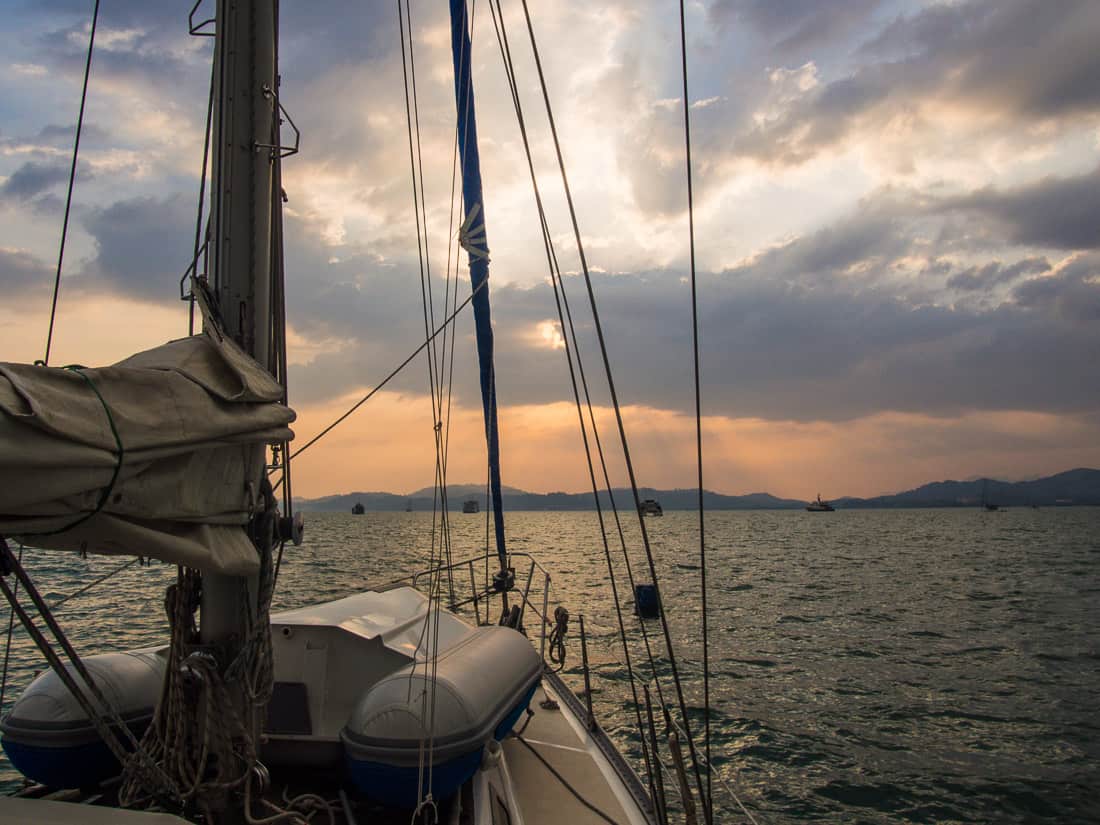
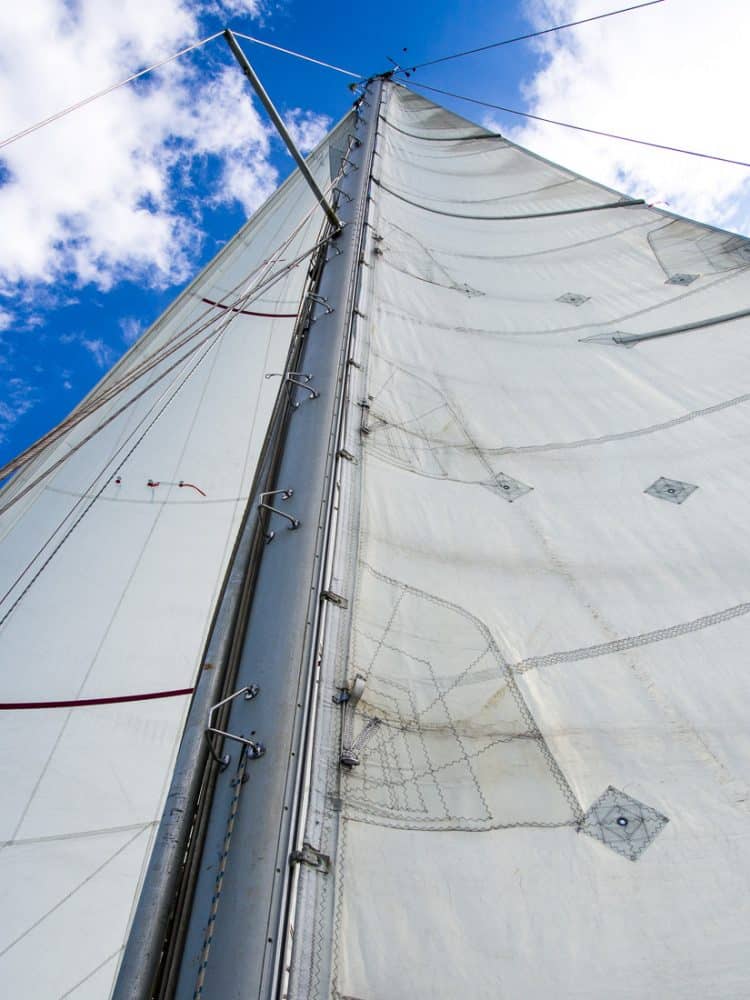
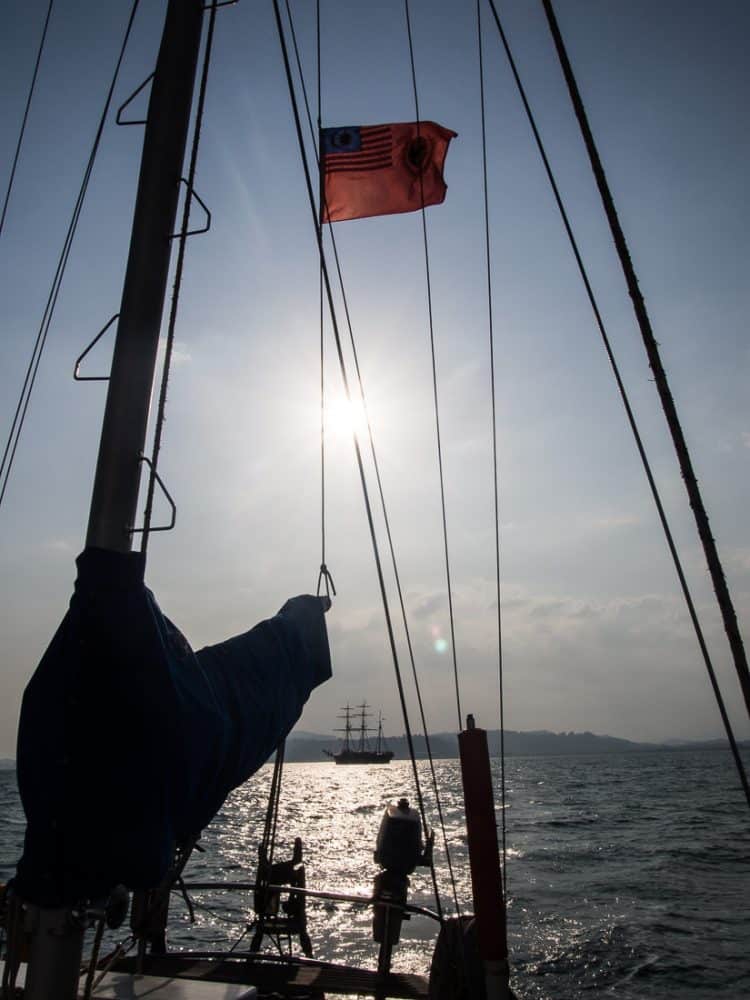
Being at sea is the ultimate freedom – nothing on land matters while you’re on the water. Glad you guys enjoyed it. The pics are amazing :-)
That’s a nice way to put it Mick and exactly how we felt.
This is so awesome! Dave and I are thinking of doing something similar. He knows how to sail and used to skipper a yacht back in Perth, but he wants me to learn so we can sail together.
He’s keen to sail around the world… although I’m just content with sailing in the Med for the moment!
Close family friends of ours sailed from Mozambique to Indonesia on a boat around the same size as the one you’re sailing on, with their three children – aged 3, 6 and 9. And two crew members. Amazing!
Their biggest worry was the pirates but luckily they made it to Indonesia safe and sound :-)
We would definitely recommend learning to sail Carmen. We put it off for years because of the expense but it was so worth it! You’re lucky that Dave already has experience. Start with the Med and I bet you get the bug to go further!
What a perfect spot to learn to sail. Gorgeous photos! I especially love the sunset shot, it really couldn’t get more perfect.
It really was the perfect place to learn. There were a couple of sunsets we sailed into that were truly stunning. We felt so happy and at peace.
that’s really cool, I always wished I grew up near the water in one of those “sailing families”. I’d love to learn one day as well, maybe on a smaller boat though! That looks big!
We’d definitely recommend it Rachel. If it was just us sailing we’re go for a 30/35ft yacht but as the courses usually have 5 students bigger is better!
Loved the story I want to undertake your sailing course is it possible to do competent crew and day skipper in one go I have 8.3 mtr catalac catamaran in UK so have some experience however have probably got some bad habits I’ve always been a nomad just didn’t realise it I’m living in Cambodia at mo but will return to UK to take my catt to the med hopefully ? Thanks guys